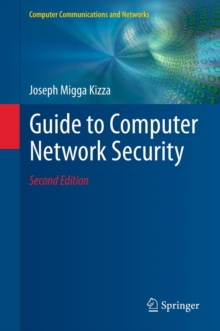
Guide to Wireless Sensor Networks PDF
Edited by Sudip Misra, Isaac Woungang, Subhas Chandra Misra
Part of the Computer Communications and Networks series
Description
Overview and Goals Wireless communication technologies are undergoing rapid advancements.
The last few years have experienced a steep growth in research in the area of wireless sensor networks (WSNs).
In WSNs, communication takes place with the help of spatially distributedautonomoussensornodesequippedtosensespeci?cinformation.
WSNs, especially the ones that have gained much popularity in the recent years, are, ty- cally, ad hoc in nature and they inherit many characteristics/features of wireless ad hoc networks such as the ability for infrastructure-less setup, minimal or no reliance on network planning, and the ability of the nodes to self-organize and self-con?gure without the involvement of a centralized network manager, router, access point, or a switch.
These features help to set up WSNs fast in situations where there is no existing network setup or in times when setting up a ?xed infrastructure network is considered infeasible, for example, in times of emergency or during relief- erations.
WSNs ?nd a variety of applications in both the military and the civilian population worldwide such as in cases of enemy intrusion in the battle?eld, object tracking, habitat monitoring, patient monitoring, ?re detection, and so on.
Even though sensor networks have emerged to be attractive and they hold great promises for our future, there are several challenges that need to be addressed.
Some of the well-known challenges are attributed to issues relating to coverage and deployment, scalability, quality-of-service, size, computational power, energy ef?ciency, and security.
Information
-
Download - Immediately Available
- Format:PDF
- Publisher:Springer London
- Publication Date:29/05/2009
- Category:
- ISBN:9781848822184
Information
-
Download - Immediately Available
- Format:PDF
- Publisher:Springer London
- Publication Date:29/05/2009
- Category:
- ISBN:9781848822184










